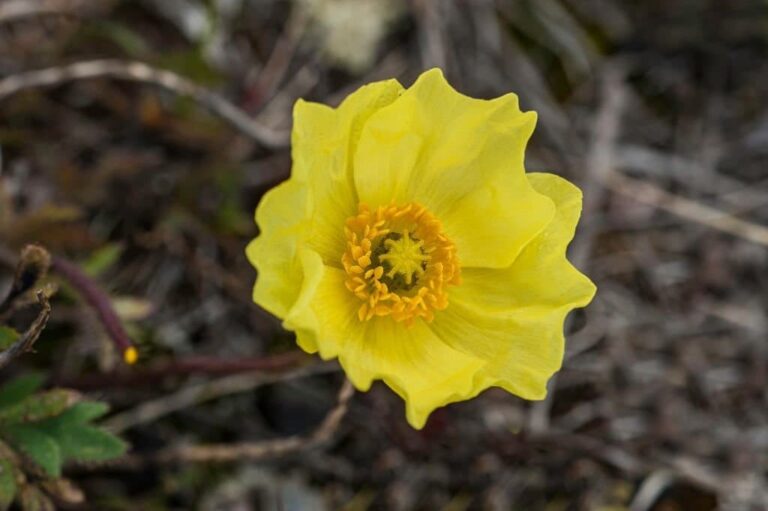Top 15 Flower Meanings: Flower Symbolism And Significance From History
For centuries, a subtle language of flowers has been used to convey complex messages. This tradition, particularly prevalent during the Victorian era, has roots in cultures worldwide, where plants and flowers were imbued with symbolic meanings. They represented deities, spirits, significant life events, religious occasions, and more. As societies evolved, so did their significance, taking on a new level of sophistication.
During this time, people – especially those confined by social norms, such as young men and women – relied on flowers to communicate in a way that was both subtle and powerful. They would send single blooms or carefully curated bouquets to convey emotions, thoughts, and intentions. Today, online florists like FTD allow customers to create custom arrangements for flower delivery, adding a personal touch to the art of sending messages through flowers.
Azaleas
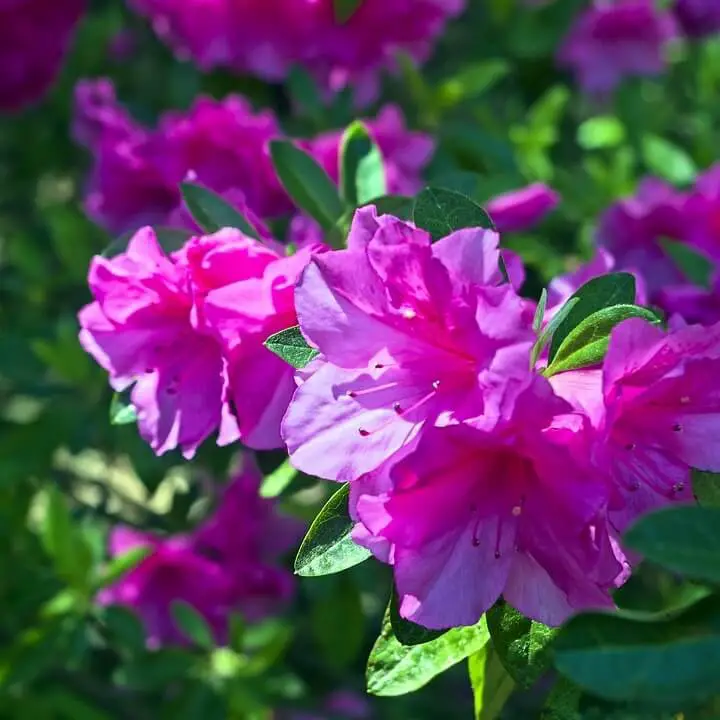
The symbolism surrounding azaleas is often linked to themes of love, yet their significance goes beyond this romantic undertone. These flowers convey a sense of fragile passion and temperance, suggesting a delicate balance between one’s emotions and the need for self-care. This subtlety may be interpreted as a gentle reminder to prioritize one’s own well-being by the sender.
Furthermore, in Chinese culture, azaleas are often associated with womanhood, reflecting the importance of nurturing and care in feminine identity.
Baby’s Breath
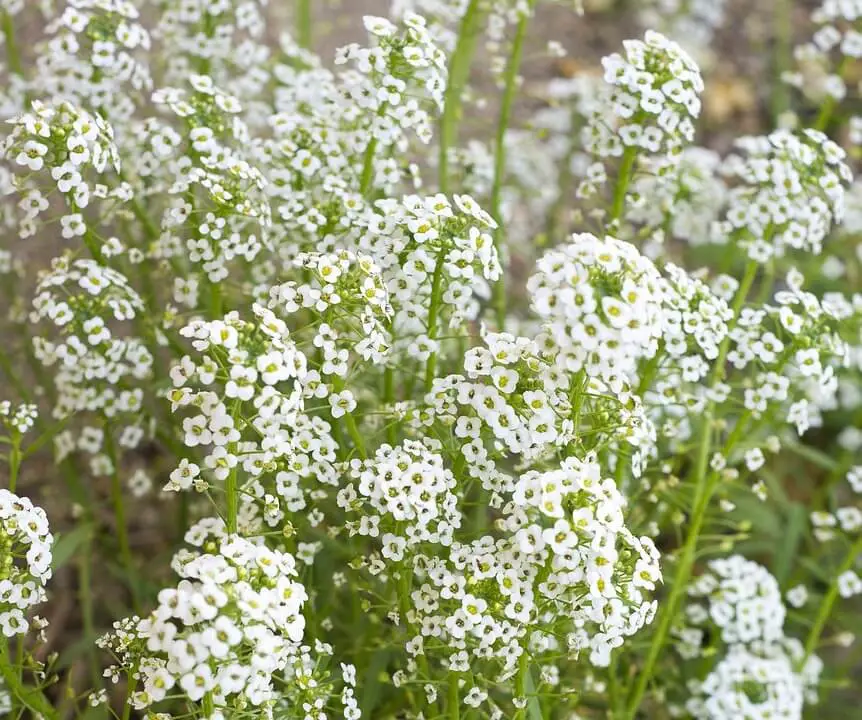
The symbolism of the tiny, delicate white flower is deeply rooted in its very essence. Despite being often utilized as a ‘filler’ in floral arrangements, this small yet striking bloom holds profound significance on its own. Its meaning is encapsulated in its name, conveying the themes of purity of heart and innocence. The flower’s understated beauty belies the powerful message it conveys, making it more than just a mere decorative element.
Carnations
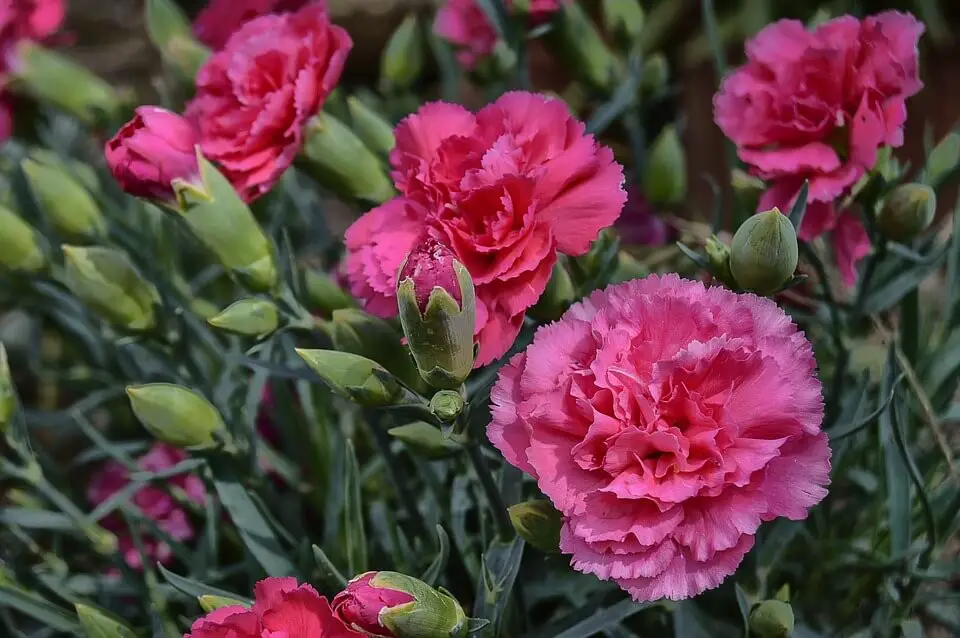
The carnation is a flower with multiple layers of meaning. Not only do individual colors hold distinct significance, but so too does the overall symbolism. As the birth flower for January, it’s also associated with fascination, distinction, impulsiveness, joy, and divine or devoted love. Delving deeper, we find that different hues convey unique messages. Pink carnations speak to enduring love, particularly with a maternal undertone.
Purple ones evoke capriciousness and unpredictability, while red carnations represent admiration, pride, fascination, and an aching heart. White carnations have a dual meaning – on one hand, they symbolize innocence, sweetness, and purity; on the other, they represent pure or ardent love and the strength and enduring qualities of love that come with it. Finally, striped carnations convey refusal, but with regret and without bitterness.
Chrysanthemum
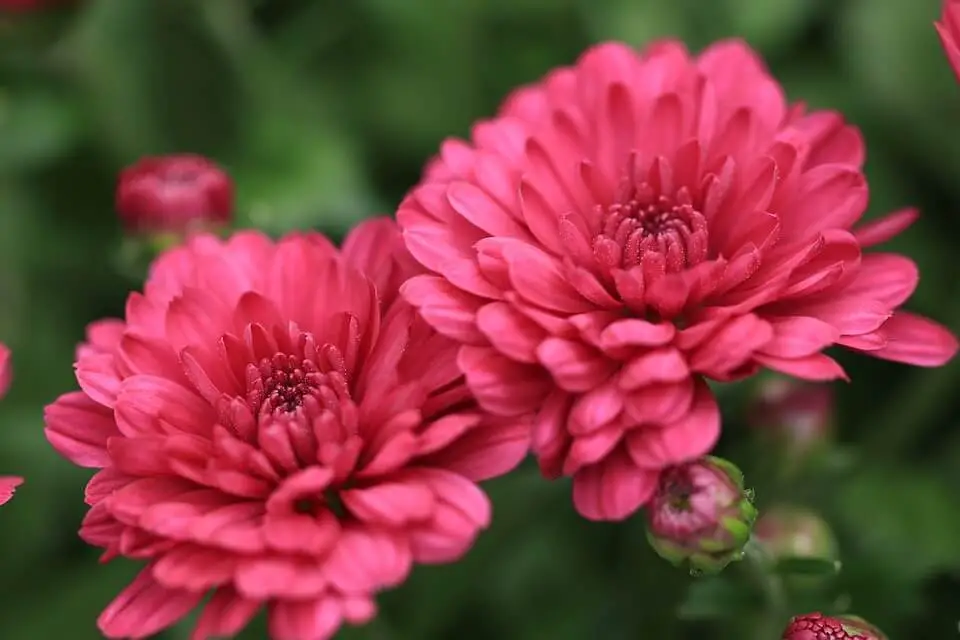
In November, the birth flower is none other than the vibrant chrysanthemum. This bloom’s underlying theme is one of joy, optimism, and a general sense of cheerfulness, not unlike its cousin, the carnation. However, it’s worth noting that each color of the chrysanthemum holds slightly different connotations. For instance, the red variety serves as a straightforward declaration of love, conveying the sentiment ‘I love you.’ In contrast, the white chrysanthemum symbolizes truth and loyal devotion.
Meanwhile, the yellow chrysanthemum speaks to feelings of slighted or unrequited love.
Cyclamens
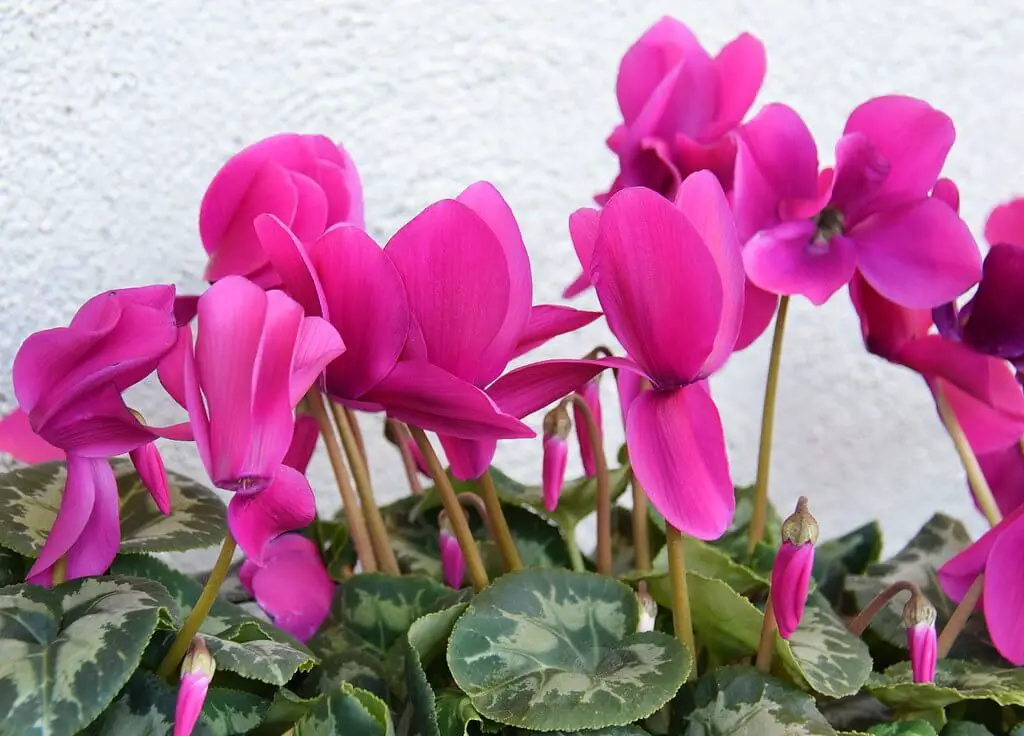
Cyclamens, native to the Mediterranean region, convey a sense of surrender and finality through their downward-facing petals. This subtle yet powerful visual cue alludes to the symbolic meaning of resignation or farewell, underscoring the idea that these flowers have come to terms with their own mortality.
Daffodils
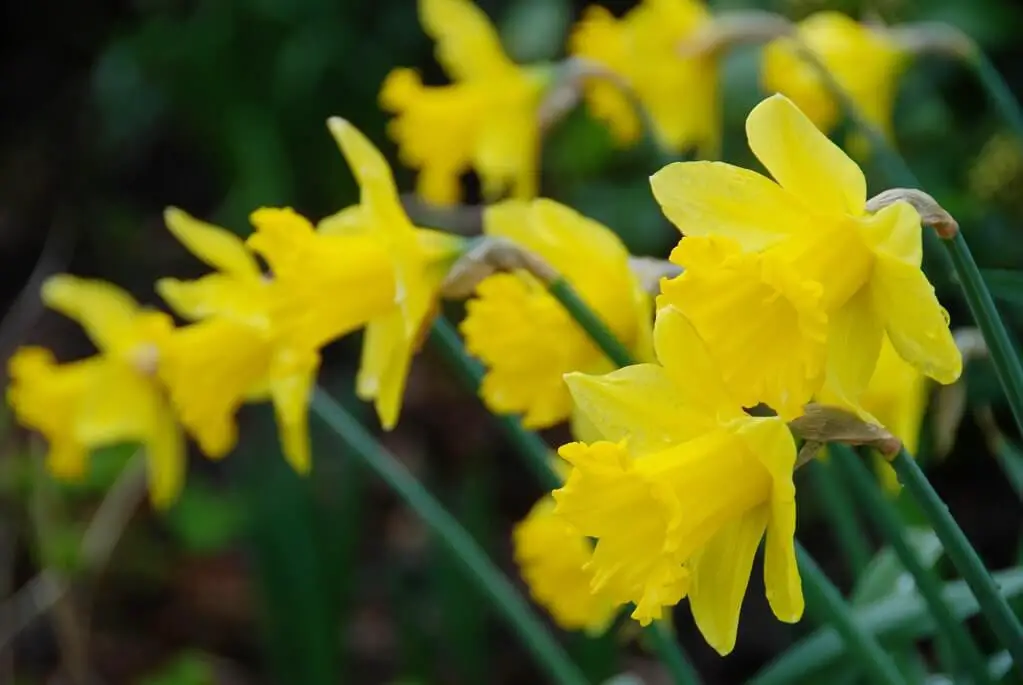
The daffodil, March’s birth flower, embodies multiple meanings. While its most prominent connotations relate to rebirth and new beginnings, which are fitting given its early blooming nature, other interpretations include regard, chivalry, unrequited love, and eternal life. Interestingly, a solitary daffodil can also symbolize misfortune, offering a nuanced perspective on this vibrant flower’s significance.
Daisies
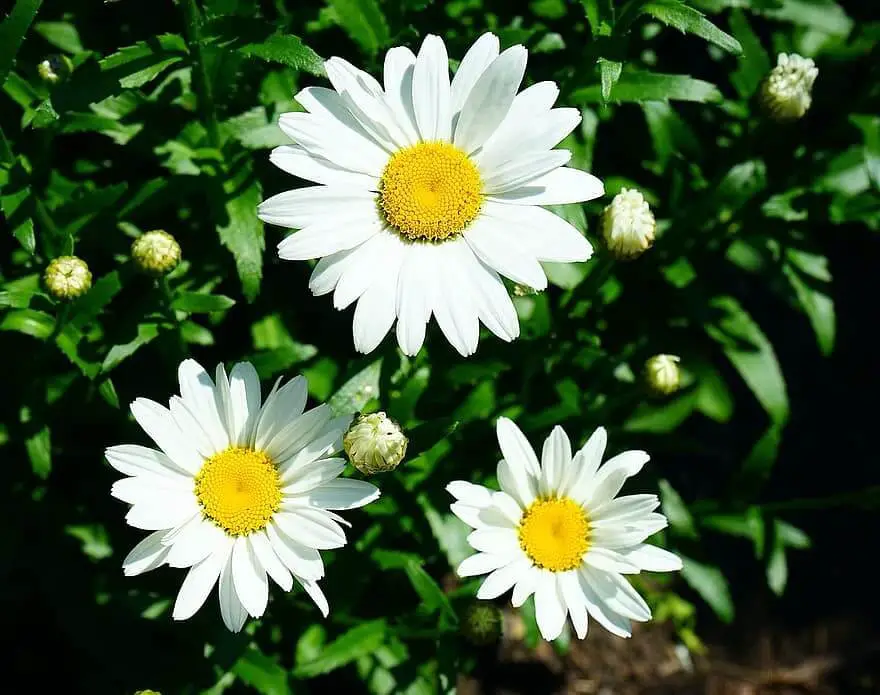
In the realm of symbolism, daisies are often associated with a quintessential set of qualities: purity, innocence, loyalty – particularly when it comes to romantic love, beauty, simplicity, and patience. Moreover, they also convey the powerful notion that love can triumph over all obstacles.
Gladiolus
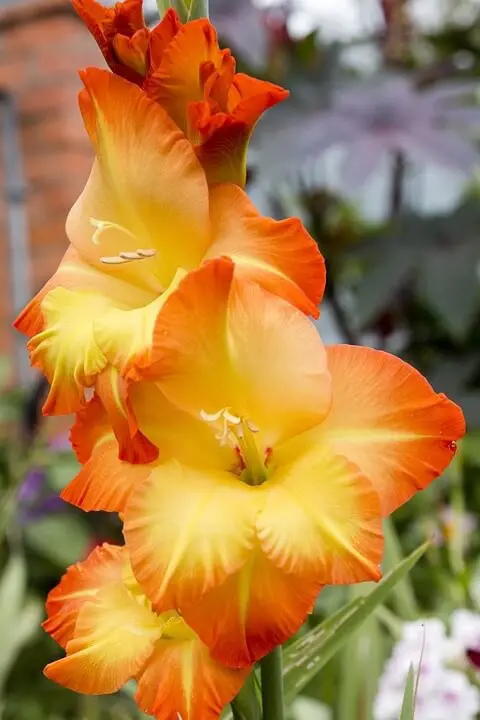
The Gladiolus flower gets its name from its unique leaf shape, which bears a striking resemblance to a gladius – a type of ancient sword. This Latin term also carries a deeper meaning, implying that the recipient’s heart is being pierced by true emotions. Beyond its literal symbolism, the Gladiolus represents a complex bouquet of qualities, including strength of character, preparedness, and sincerity.
Perhaps most intriguingly, it’s often associated with love at first sight – a notion that speaks to the power of instantaneous connection.
Hyacinths

When it comes to the symbolic meaning behind flowers, hyacinths are known for their lighthearted and whimsical connotations. In the language of flowers, these blooms are often associated with a sense of playful joy, impulsiveness, and a love of games or sport. Additionally, purple hyacinths can also serve as a gesture of apology, highlighting the complex emotional nuances that can be conveyed through this beautiful and fragrant flower.
Irises
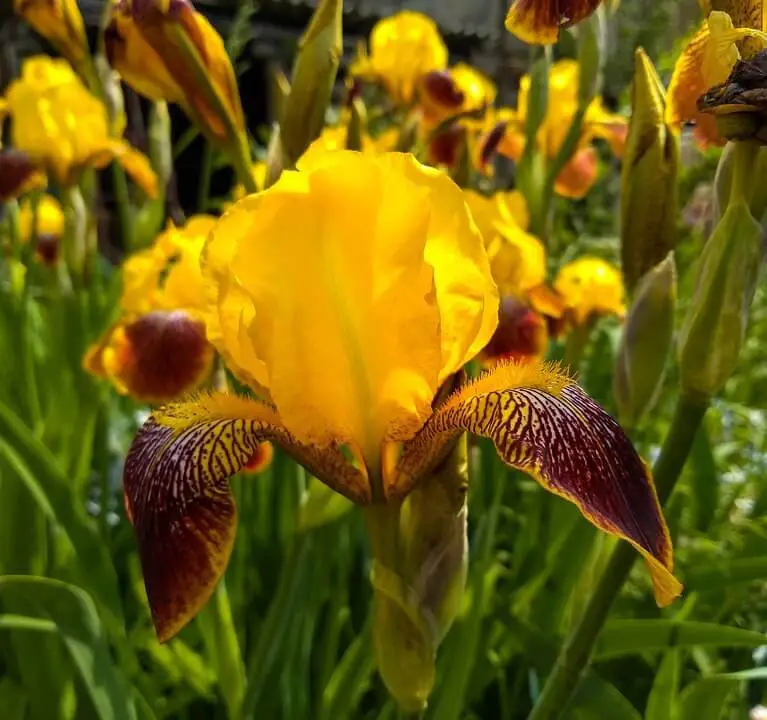
With their majestic appearance and storied history, irises embody a rich tapestry of symbolic meanings. These flowers are often associated with profound qualities such as wisdom, faith, and hope, as well as the virtues of valor and cherished friendships. Additionally, irises can convey subtle yet significant messages like ‘my compliments’ or a promise of love between two individuals.
Lilies
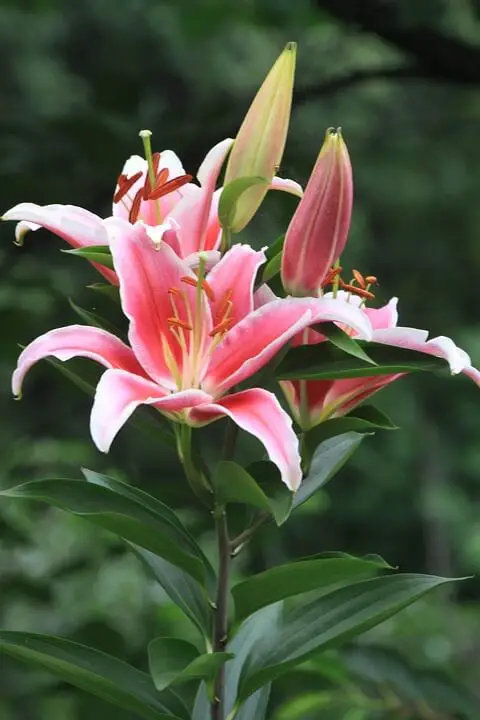
When it comes to lilies, the symbolism runs deep. While individual types and colors may convey distinct meanings, there’s a common thread that weaves through many of these interpretations. At their core, lilies represent virtues such as chastity, modesty, and wisdom, evoking feelings of elegance, beauty, and reverence. They’re also often associated with concepts like faith, pride, and chivalry – qualities that speak to our sense of honor and integrity.
By exploring the nuances of these meanings, we can gain a deeper appreciation for the cultural significance of lilies.
Orange Blossoms
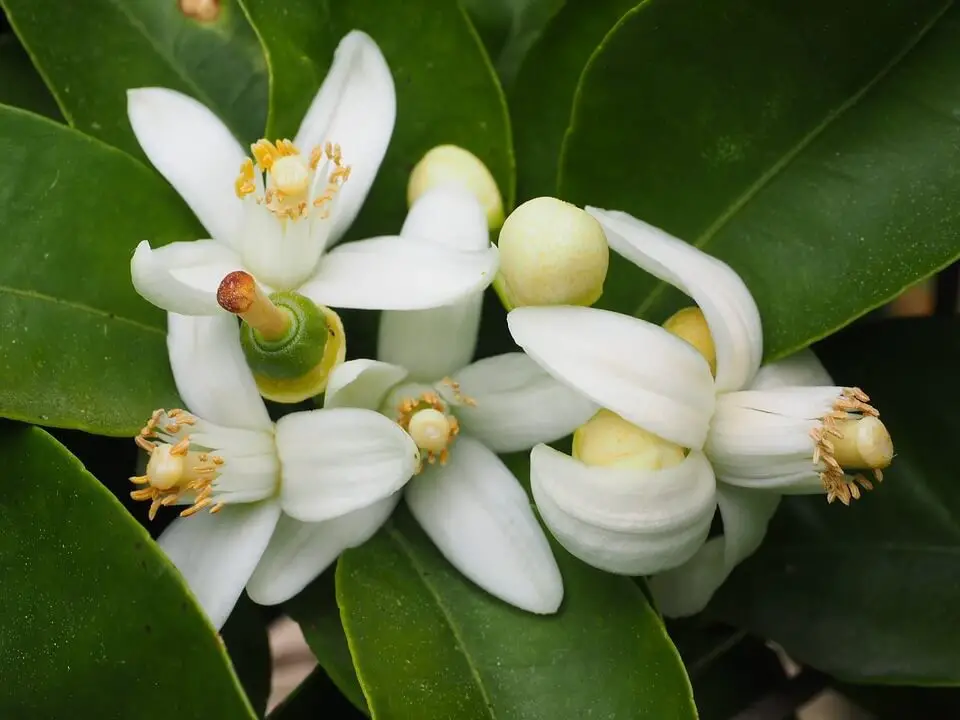
The allure of orange blossoms in wedding arrangements is undeniable, with their rich symbolism conveying profound messages. Purity, eternal love, innocence, marriage, and fruitfulness are just a few of the themes that make them an iconic choice for couples exchanging vows.
Roses

When discussing the meanings behind flowers, it’s impossible to ignore the complex symbolism associated with roses. Like many other blooms, the meaning of a rose can be influenced by factors such as color and context. While roses are often synonymous with love, passion, and perfection, there is more to their story than just these familiar connotations. Take, for instance, the burgundy rose, which represents beauty that lies beneath the surface – a hidden yet undeniable allure.
Other colors offer different shades of meaning, such as coral, which speaks to desire, while lavender evokes enchantment and love at first sight. The humble rose leaf can be seen as a gentle reminder to hold onto hope, while moss roses convey a confession of love. The vibrant orange rose can signify enthusiasm or fascination, whereas peach roses represent admiration, appreciation, and gratitude – or, alternatively, modesty.
Pink roses are often associated with happiness, thankfulness, appreciation, gladness, friendship, and even sympathy. The classic red rose is a timeless symbol of love, passion, beauty, remembrance, and courage. For its part, the white rose represents purity, innocence, friendship, virtue, and a commitment to doing what’s right. Yellow roses, in turn, convey joy, friendship – but also jealousy or unrequited love.
The combination of red and white roses signifies unity, while red and yellow roses are often used to celebrate congratulations. When paired with orange, yellow roses take on a passionate tone. Finally, the thornless rose is said to represent love at first sight, highlighting the power of instant attraction.
Tulips
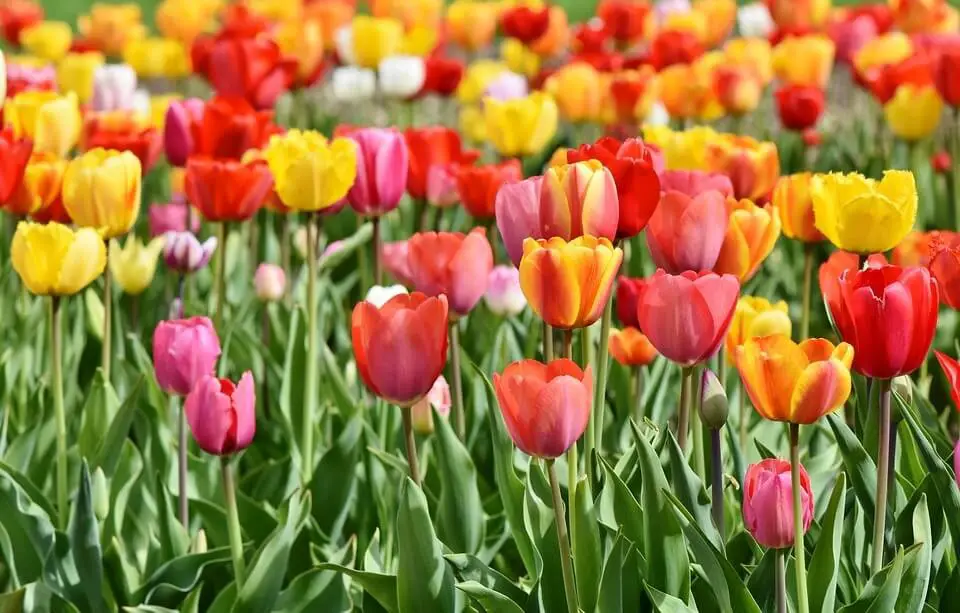
Tulips convey complex emotions and messages through their vibrant colors. The primary themes are centered around fame, perfect love, and declarations of devotion. Each hue holds a distinct emphasis:Red tulips symbolize passionate declarations of love or pleadings for the recipient to acknowledge the sender’s affections. Yellow tulips represent hope and joy, often expressing ‘there’s sunshine in your smile.’ In some cases, they convey hopeless love.
Cream-colored tulips are a promise of eternal devotion, encapsulated by the sentiment ‘I will love you forever.’Variegated tulips pay tribute to the recipient’s striking features, specifically highlighting their beautiful eyes. These subtle yet powerful expressions allow us to communicate deep emotions and sentiments through the simple language of flowers.
Violets
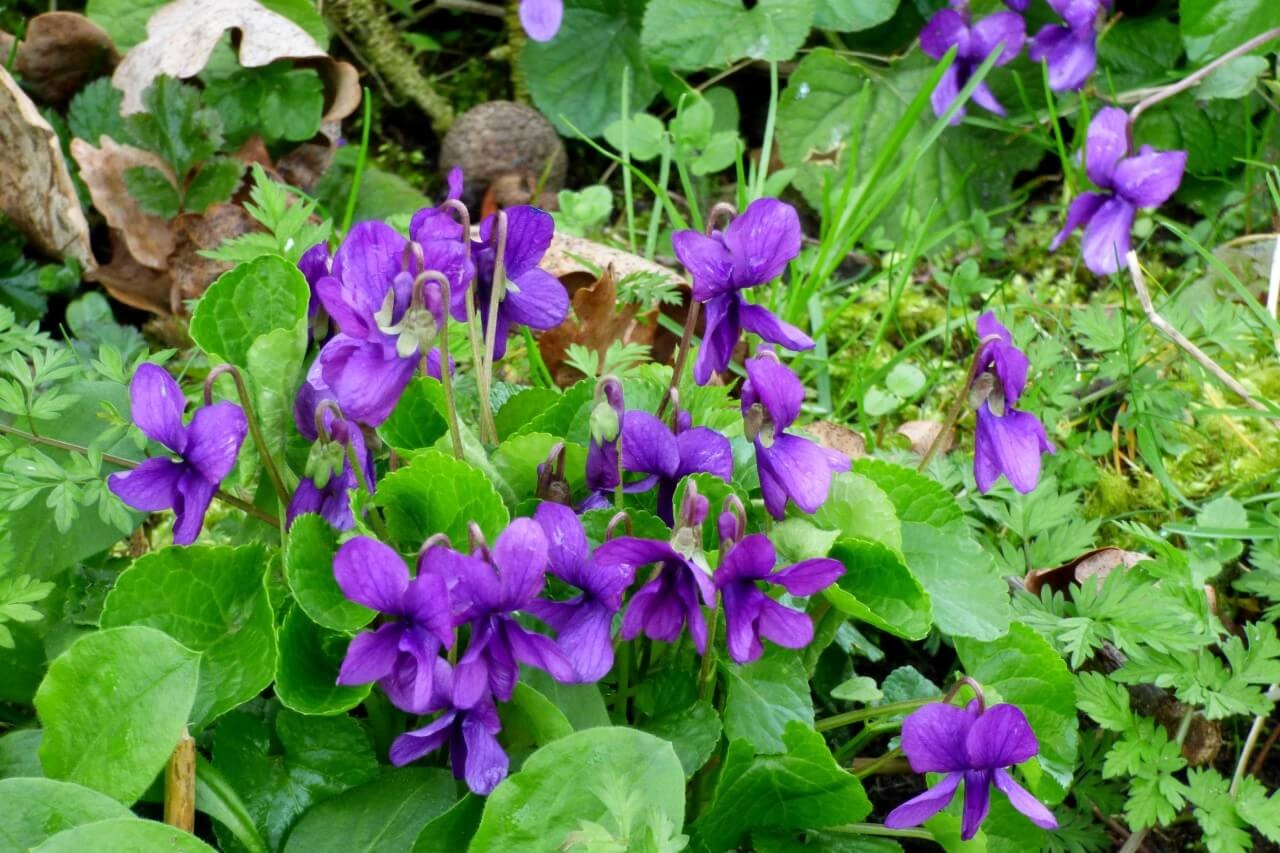
Violets are often imbued with symbolic meanings that highlight their charming and endearing nature. Modesty, faithfulness, and understated beauty are just a few of the qualities these delicate blooms represent. They can also serve as a gentle reminder of affection and innocence, evoking feelings of being thought of and cherished. Furthermore, violets can be seen as a subtle plea to take a chance on happiness, acknowledging that life’s beauty is often found in the simple things.
With their intricate details and soft hues, it’s no wonder why violets have captured the hearts of many.
Related Posts
When sending flowers, tipping your delivery person can be a thoughtful gesture. But how much is too much? Understanding gratuities for your floral courier is crucial to avoid awkwardness or inadvertently offending the individual. In this context, it’s essential to consider the quality of service, the complexity of the order, and any additional services provided.
For instance, if your delivery person goes above and beyond to ensure a smooth transaction, a small tip can be a suitable expression of appreciation. On the other hand, if the service is standard, a smaller or no tip might be more appropriate. Ultimately, the key is to strike a balance between showing gratitude for their hard work and avoiding excessive tipping that could lead to discomfort.
Meanwhile, in the realm of gardening, identifying weeds with yellow flowers and removing them can be a tedious task. However, having the right knowledge and strategies at your disposal can make this process more manageable. With the help of this article, you’ll gain valuable insights into the world of flower delivery gratuities as well as learn about colorful perennials for partial shade gardens or containers.

